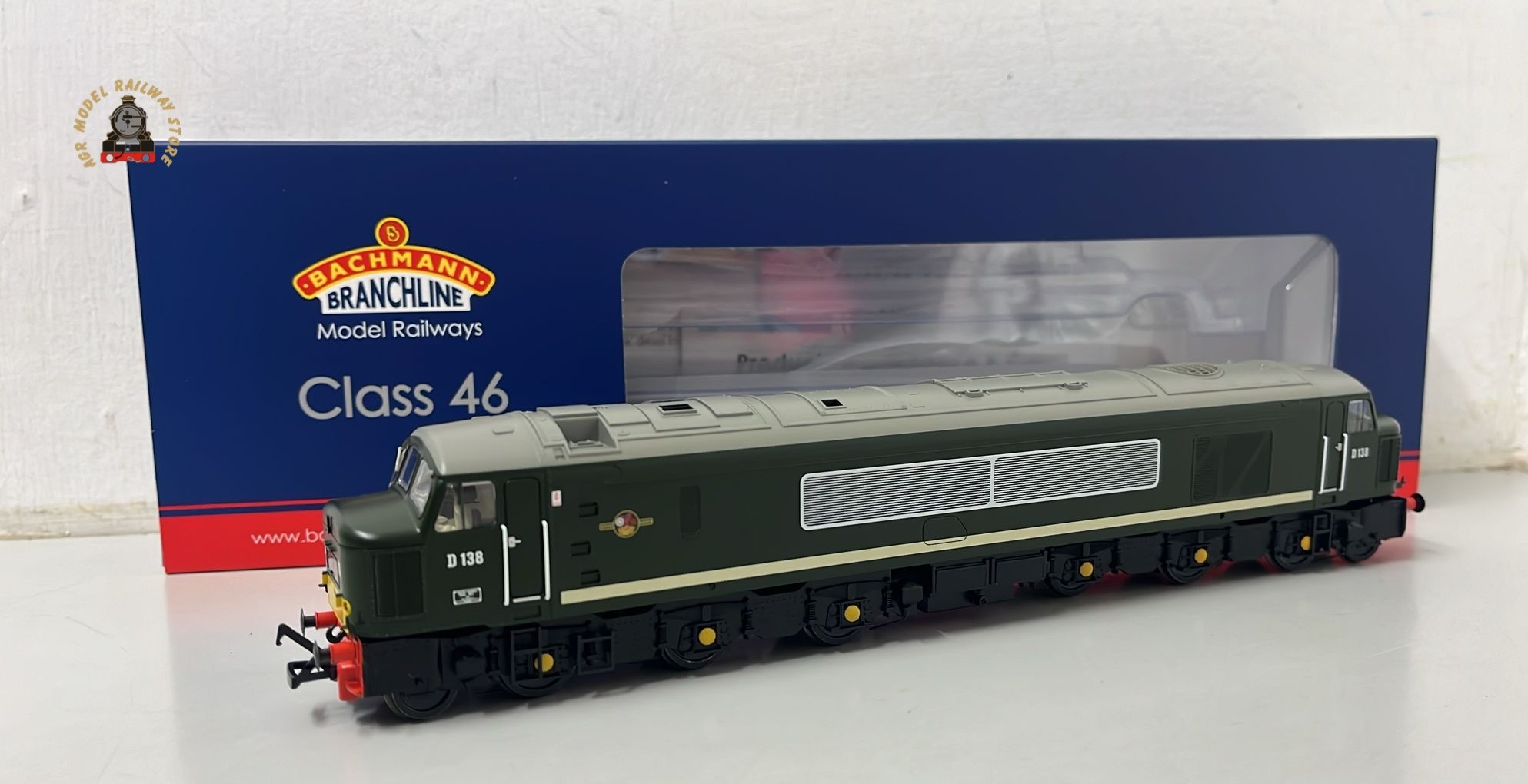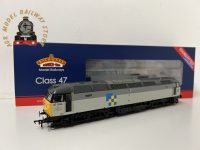Bachmann 32-702A Class 46 Centre Headcode D138 BR Green (Small Yellow Panels) – OO Gauge
Details
The popular Class 46 Diesel Locomotive returns to the Bachmann Branchline range with this OO scale model depicting No. D138 in BR Green livery with Small Yellow Panels. Together with the Class 44s and 45s the classes were commonly known as the ‘Peaks’, because the Class 44s had been named after mountains in England and Wales, however all but one of the 56 Class 46s went unnamed.
The Bachmann Branchline model combines a finely-proportioned bodyshell with extensive detailing throughout, including separately fitted cab handrails, windscreen wipers, lamp brackets and sandpipes. With a powerful 5-pole motor fitted with twin flywheels which drives both bogies, these models have plenty of pulling power to haul even the longest trains. With a 21 Pin DCC decoder interface, it’s easy to add a decoder or sound decoder and speaker for use on DCC, or why not opt for one of our SOUND FITTED models and enjoy realistic running sounds straight out of the box.
MODEL FEATURES:
- Bachmann Branchline OO Scale
- Era 5
- Pristine BR Green (Small Yellow Panels) livery
- Running No. D138
- Centre Headcode Panels displaying headcodes 1M67 and 1N37
- NEM Coupling Pockets
- Sprung Buffers
- Powerful 5 Pole Motor with Twin Flywheels
- Detailed Cab Interior with pre-fitted Driver in one cab
- Directional Lighting
- Locomotive Ready to Accept a Speaker
- Accessory Pack
- Equipped with a 21 Pin DCC Decoder Socket
- Length 275mm
CLASS 46 HISTORY
The Class 46 1Co-Co1 BR-Sulzer Type 4 locos were built from 1961–1963 at British Railways’ Derby Works and were initially numbered D138–D193. With the arrival of TOPS they were renumbered to Class 46. Fifty-six locomotives were built. The first was withdrawn in 1977 and all of them were withdrawn by the end of 1984. Class 46s began their lives with twin headcode panels situated in the centre of the nose, and later built examples a single central headcode panel, to which all class members were progressively converted. The majority received plated over nose ends with sealed beam headlights in the 1970s. Liveries worn were standard BR lined green, ‘austerity’ green without the cream embellishments of the original livery, and BR Blue with full yellow ends.
The Class 46 design was structurally the same as the preceding Class 45 build, and had the same Sulzer engine, but differed in the fitment of a Brush generator and traction motors, in place of the Crompton Parkinson equipment fitted to the Class 45. Along with the other Sulzer Class 44 and 45 designs they are often referred to as “Peaks”, so named because the earliest of the Class 44 were named after mountains.
Despite intermittent use on freight trains, Class 46s were regular performers on passenger turns, particularly North East-South West, Trans-Pennine and secondary North East-London trains, and depot allocations reflected this with locos at Gateshead and Plymouth in 1977 giving a typical spread. Freight workings were also quite often worked over long distances, particularly “clay hoods” carrying china clay from Cornwall to the area around Stoke-on-Trent. In the 1980s the remaining locomotives were concentrated at Gateshead depot, and the final booked passenger workings for the class were the dated summer Saturday services Bradford – Weymouth (between Bradford and Birmingham New Street), Newcastle – Plymouth, Newcastle – Blackpool North, and York – Blackpool North. The Class 46s also worked several named expresses including the Yorkshire Pullman, Flying Scotsman, Hull Executive, Thames-Clyde and Thames-Forth, also known as The Waverley, on the much lamented route from Carlisle to Edinburgh via Hawick.






